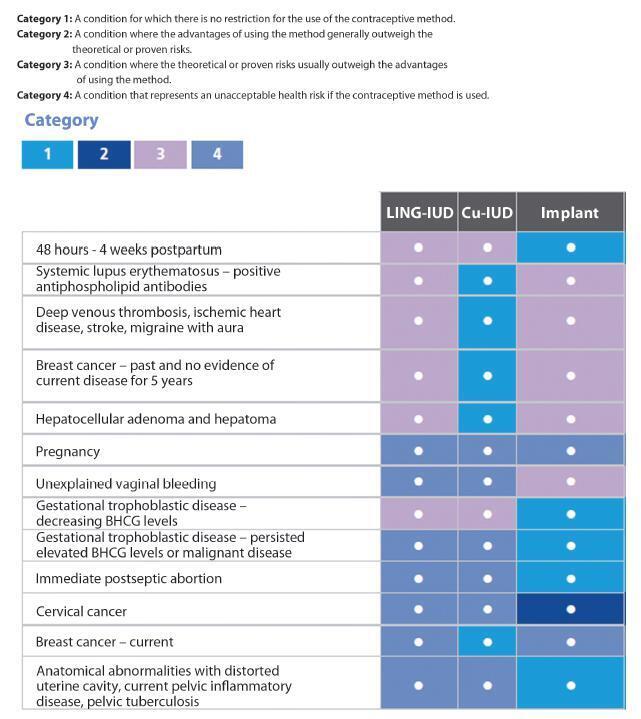-
Review Article06-01-2017
Long-Acting Reversible Contraception
Revista Brasileira de Ginecologia e Obstetrícia. 2017;39(6):294-308
Abstract
Review ArticleLong-Acting Reversible Contraception
Revista Brasileira de Ginecologia e Obstetrícia. 2017;39(6):294-308
Views254See moreAbstract
Unwanted pregnancy is a major public health problem both in developed and developing countries. Although the reduction in the rates of these pregnancies requires multifactorial approaches, increasing access to long-acting contraceptive methods can contribute significantly to change this scenario. In Brazil, gynecologists and obstetricians play a key role in contraceptive counseling, being decisive in the choice of long-acting reversible methods, characterized by intrauterine devices (IUDs) and the contraceptive implant. The vast scope due to the reduced number of situations to indicate long-acting methods should be emphasized in routine contraceptive counseling. On the other hand, gynecologists and obstetricians should adapt the techniques of insertion of long-acting methods, and engage in facilitating conditions to access these contraceptives through public and private health systems in Brazil. This study is part of a project called Diretrizes e Recomendações FEBRASGO (Guidelines and Recommendations of the FEBRASGO - Brazilian Federation of Gynecology and Obstetrics Associations from the Portuguese acronym). It aims to review the main characteristics of long-acting contraceptives and critically consider the current situation and future prospects to improve access to these methods, proposing practical recommendations of interest in the routine of gynecologists and obstetricians.

-
Original Article10-11-2011
Effect of trimegestone on mammary gland of castrated rats
Revista Brasileira de Ginecologia e Obstetrícia. 2011;33(7):137-142
Abstract
Original ArticleEffect of trimegestone on mammary gland of castrated rats
Revista Brasileira de Ginecologia e Obstetrícia. 2011;33(7):137-142
DOI 10.1590/S0100-72032011000700004
Views105See morePURPOSE: To evaluate the efect of trimegestone on the histological changes of the mammary tissue of castrated rats. METHODS: Forty-five virgin female Wistar rats were used after oophorectomy. Sixty days after surgery, with hypoestrogenisms confirmed, the experimental rats were randomly assigned to three groups of 15 animals each, when then the specific treatment for each group was started. The control group (C) and experimental groups 1 and 2 respectively received 0.9% saline solution, 17-beta-estradiol and 17-beta-estradiol in combination with trimegestone for 60 consecutive days. After the end of treatment , the inguinal mammary glands were removed, stained with hematoxylin and eosin (HE) for morphometry and examined by immunohistochemistry for the quantification of anti-PCNA antibody in the mammary tissue, followed by euthanasia. The morphometric parameters evaluated were: epithelium cell-proliferation, secretor activity and mammary stroma changes. There were nine deaths during the experiment. The variables were submitted to statistical analysis adopting the 0.05 level of significance. RESULTS:Histological changes were observed in 16/36 rats, mild epithelial hyperplasia in 13/36, moderate epithelial hyperplasia in 3/36, with no cases of severe epithelial hyperplasia. Stromal fibrosis was found in 10/36 and secretory activity in 5/36 rats. All morphometric variables were significant in the estrogen group compared to control (p=0.0361), although there were no difference between the group receiving combined treatment and the controls (p=0.405). The immunohistochemical analysis showed no difference between groups. CONCLUSIONS:The hormones administered to castrated rats, i.e., 17 beta-estradiol alone or in combination with trimegestone, increased the proliferation of breast cells, but this effect appeared to be lower in the combined treatment, the same occurring regarding fibrosis of the mammary stroma.
-
Review Article09-28-2010
Current aspects on diagnosis and treatment of endometriosis
Revista Brasileira de Ginecologia e Obstetrícia. 2010;32(6):298-307
Abstract
Review ArticleCurrent aspects on diagnosis and treatment of endometriosis
Revista Brasileira de Ginecologia e Obstetrícia. 2010;32(6):298-307
DOI 10.1590/S0100-72032010000600008
Views94See moreEndometriosis is characterized by the presence of endometrial tissue, localized outside the uterine cavity, such as peritoneal surface, ovaries, and rectum-vaginal septum. The prevalence is about 6 to 10%. Concerning the etiopathogenesis, the retrograde menstruation theory is accepted, although disruption in endometrial molecular biology seems to be fundamental to the development of endometriosis ectopic focuses. Women with endometriosis may be asymptomatic or may present complaints of dysmenorrhea, dispareunia, chronic pelvic pain and/or infertility. Although the definitive diagnosis of endometriosis needs a surgical intervention, mainly by laparoscopy, many findings obtained by physicalexamination and imaging and laboratory tests can predict, with a high degree of reliability, that the patient has endometriosis. The most common current treatments include surgery, ovarian suppression therapy or both. Pharmacological treatments that do not inhibit ovarian function are under investigation.


